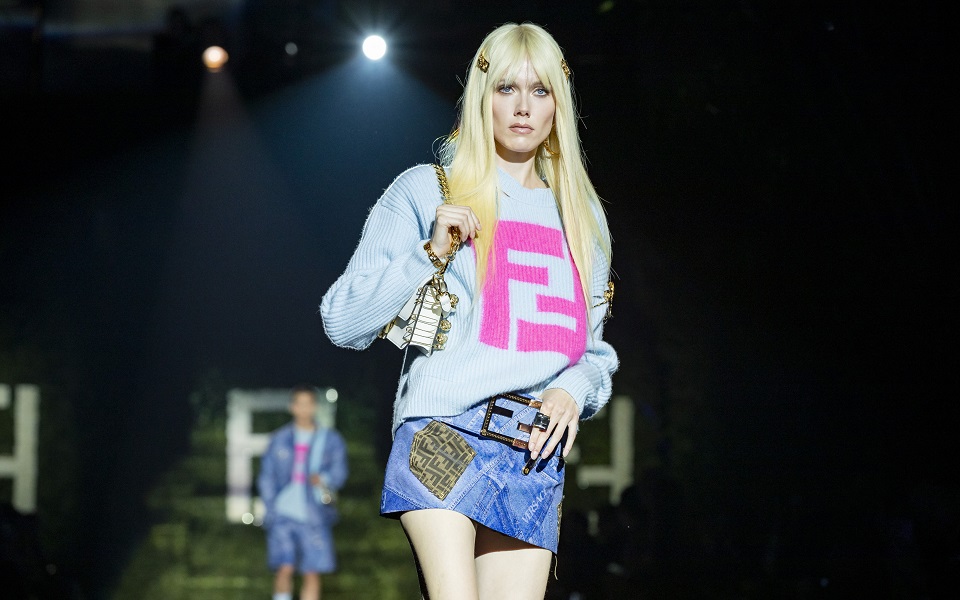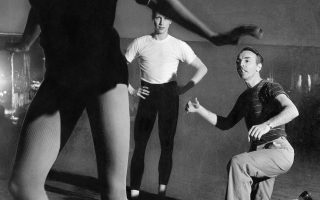‘A first in the history of fashion’

MILAN – Milan Fashion Week ended with official confirmation of what may be the biggest trend in the fashion world right now – not fringe (though there was a lot of that) or bicep bracelets (ditto) or even bikini tops (still going strong), but rather power mash-ups.
Introducing Fendace, aka Fendi by Versace, or Versace by Fendi, the pre-spring 2022 pop-up collections created by Kim Jones, Fendi’s womenswear artistic director; Silvia Venturini Fendi, Fendi’s menswear designer; and Donatella Versace of Versace, in which the designers tried their hands at the other’s house and then showed the results on the runway. The name may have been created in fun, but it’s not a joke.
“It’s a first in the history of fashion,” Versace, with some hyperbole, said in a news release. She described the experiment as “us swapping roles.”
Think of it as collaboration raised to the nth degree (but don’t dare call it collaboration, because that was so 2019). Or the opposite of conscious uncoupling, only the short-term style version. It’s when two brands in the same fashion bracket decide that, rather than competing with each other, they’re going to start playing with each other. On purpose and with permission.
Gucci kicked off the idea back in April when its designer, Alessandro Michele, “hacked” into its sister brand Balenciaga (see, no “collaboration”) for the main Gucci collection; Balenciaga returned the favor in June. Then Jean Paul Gaultier, the brand not the man, announced that after Gaultier’s retirement, each couture show would be created by a different guest designer interpreting the brand’s signatures: in July, it was Chitose Abe of Sacai; next up will be Glenn Martens of Y/Project and Diesel. Abe also teamed up with Fendi’s Jones as part of his other gig, as artistic director of Dior Men’s, to create a men’s capsule collection in June.
Unlike the projects formerly known as collaborations, which tended to feature brands from different parts of the fashion world (high fashion names and mass market; high fashion and streetwear; high fashion and outdoor rec) and which worked because the pairing had a so-wrong-it’s-cool vibe, this is a meeting of equals. Planned to plumb each other’s heritage and signatures, the better to cast them in an entirely new light.
It’s getting harder and harder to make these partnerships stand out, after all, now that practically every influencer has a collab – and lives in a collab house. You’ve got to keep pushing the concept.
And in theory, Versace and Fendi took the idea and raised it one: unveiling their swap-a-doodle at the last minute (though it had been in the works since around February) in a supposedly secret show (except that the news had leaked pretty widely the week before) and not as two brands in the same luxury stable like Gucci and Balenciaga, both of which are owned by Kering, but two brands in completely different conglomerates (Capri Holdings for Versace and LVMH Moët Hennessy Louis Vuitton for Dior).
So fun! So cross-pollinating! So inside fashion wink-wink, given that Jones was heavily rumored to be getting an official appointment as Versace’s heir back in 2017, before he snagged his Dior job and she decided to stay in charge for a while longer.
And, in the end, so hard to tell the difference. It was even kind of hard to tell the difference between this and the Versace show earlier in the week.
The biggest surprise of Fendace was how unsurprising it was – and how overwhelming the Versace aesthetic was. Maybe there was a bit more tailoring in the Versace by Fendi section, spliced and inset with scarf prints; a bit more attention to craft, especially in a rococo fan-print strapless column minidress encrusted with embroidery. But essentially, the Versace by Fendi looked very Versace – and the Fendi by Versace also looked very Versace. Albeit with more “F” logos.
This was, in part, because there are so many identifiable tropes associated with the house Gianni founded: not simply symbols like Greek key prints and baroque curves, but safety pins and chain mail, black and gold, sex and stiletto domination (also hair, witness the Donatella wigs in the Fendi by Versace section). Whereas, if you scan the hive mind for Fendi semiology, you get mostly a letter in the alphabet. Some complementary, two-tone brown. And fur, of course, which Versace has officially renounced.
Plus both sides do love an original supermodel: Shalom Harlow, Amber Valletta and Kate Moss closed the Versace by Fendi section; Naomi Campbell, the Fendi by Versace. Kristen McMenamy and Karen Elson also made appearances, as did others.
For collaborations – or, to be specific, the “celebration of Italian fashion and a to-hell-with-it disruption of the established order of things” described in the Fendace news release – to reach the level of greatness there has to be tension, rather than simply cosiness, involved; a need for negotiation between opposing aesthetics that gives birth to a new way of seeing, pushing designers way out of their comfort zones.
What makes these pairings exciting is the meeting of two otherwise antithetical minds and histories, a tug of war in cloth that creates a chimera so new it could potentially become myth.
Otherwise it’s just mutual appreciation and marketing. Or a job audition.
[This article originally appeared in The New York Times.]






